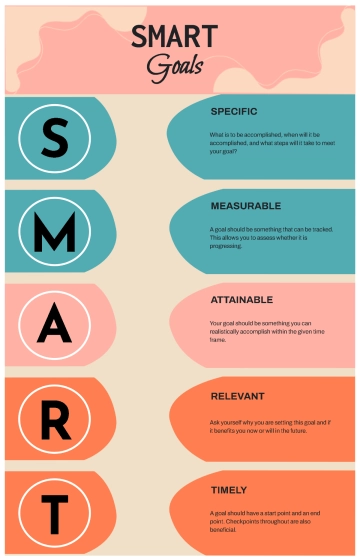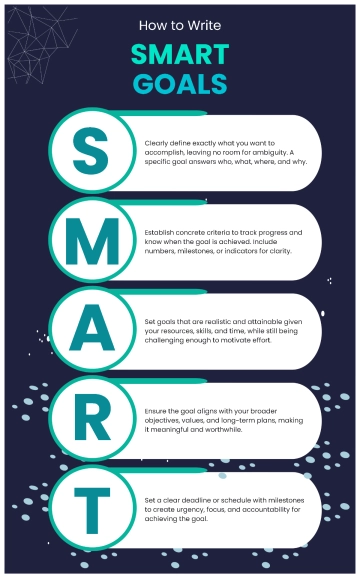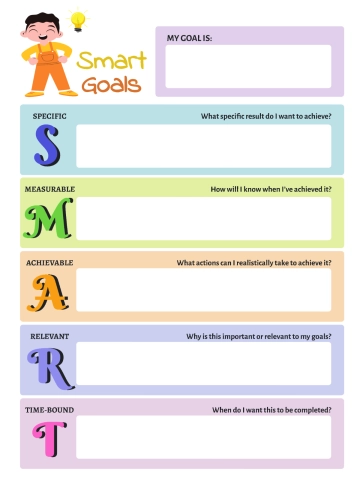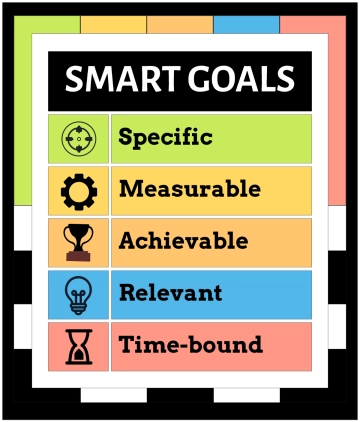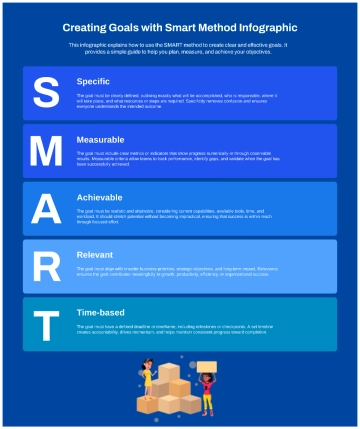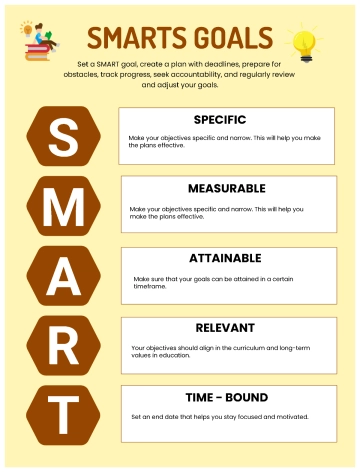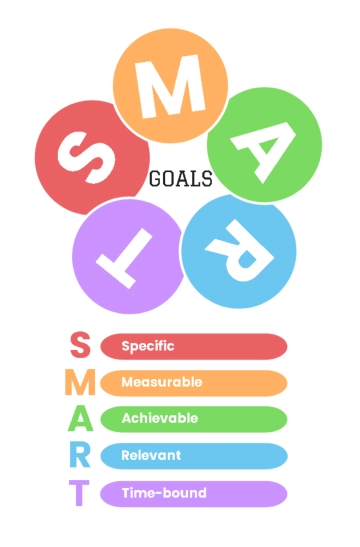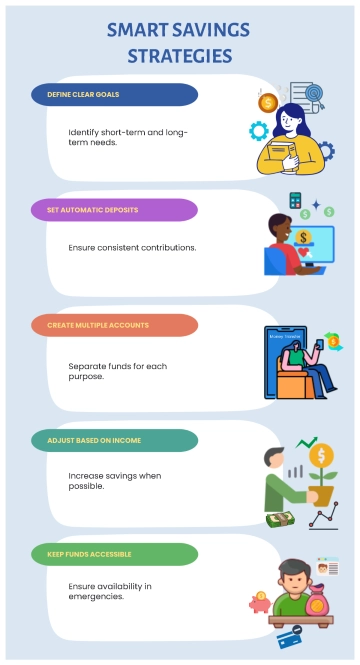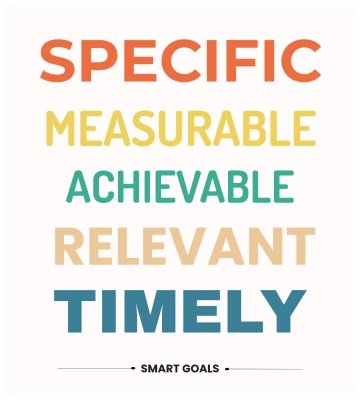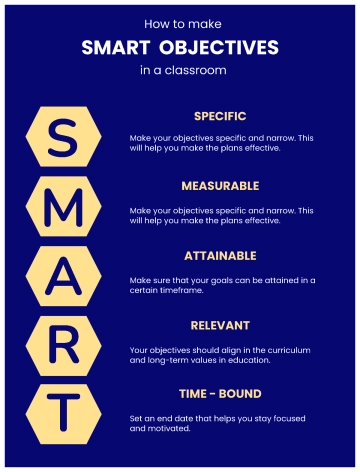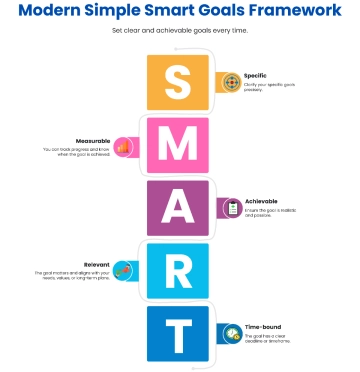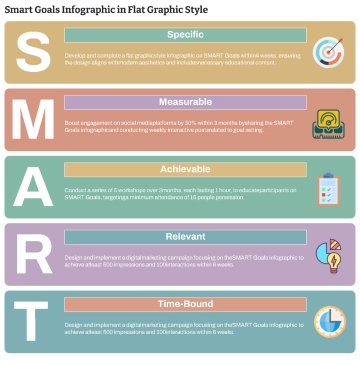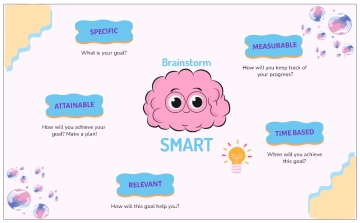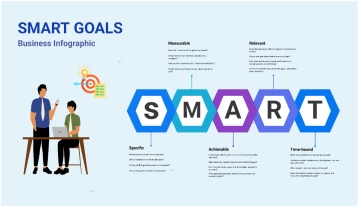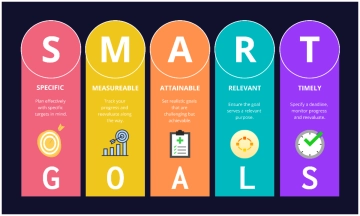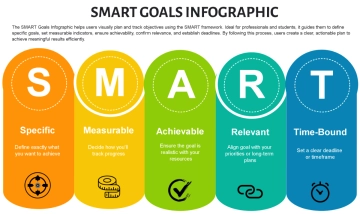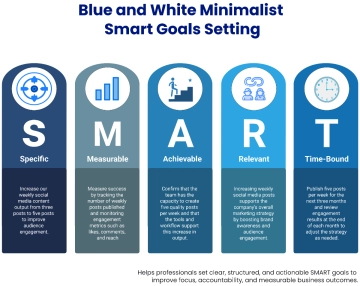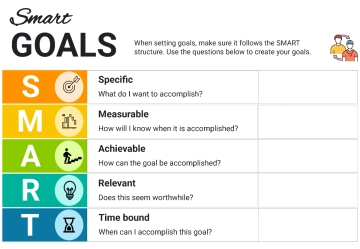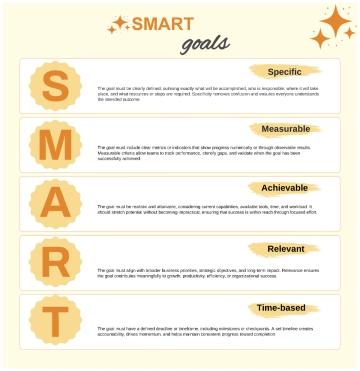Free SMART Goals for Philanthropy

Prepared by: [YOUR NAME]
Company: [YOUR COMPANY NAME]
Objective:
The objective is to measure the impact of philanthropic efforts by setting clear and specific goals, such as the [NUMBER OF BENEFICIARIES SERVED], [OUTCOMES ACHIEVED], and [SOCIETAL CHANGES EFFECTED]. This enables tracking progress, identifying areas for improvement, and maximizing the effectiveness of [PHILANTHROPIC INVESTMENTS].
SMART Goal:
Initial | Initial Meaning | Component |
|---|---|---|
S | Specific | Define specific metrics to measure the impact of [PHILANTHROPIC EFFORTS], including [NUMBER OF BENEFICIARIES SERVED]. |
M | Measurable | Establish quantifiable indicators or benchmarks to track progress and assess the effectiveness of [PHILANTHROPIC INITIATIVES] in achieving [DESIRED IMPACT]. |
A | Achievable | Ensure that the selected metrics are realistic and attainable within the context of the [PHILANTHROPIC ACTIVITIES] and available resources. |
R | Relevant | Ensure that the impact measurement goals are aligned with the overarching mission, values, and priorities of the [INDIVIDUAL DONOR]. |
T | Time-bound | Set specific time frames or milestones for evaluating the impact of [EFFORTS], providing accountability and guiding continuous improvement. |
Action Plan:
Assessment: Conduct an initial assessment of the current [MEASUREMENT PRACTICES] and identify gaps or areas for improvement in measuring philanthropic impact.
Goal Setting: Define specific [MEASUREMENT GOALS], selecting relevant metrics and indicators that align with the objectives of philanthropic initiatives.
Data Collection: Develop a systematic approach for collecting [RELEVANT DATA] to track progress towards impact measurement goals, utilizing both quantitative and qualitative methods.
Analysis: Analyze collected data to assess the effectiveness of philanthropic efforts in achieving desired impact, identifying [STRENGTHS].
Reporting: Compile impact measurement findings into comprehensive reports or presentations, communicating results to stakeholders and informing decision-making processes.
Accountability:
Stakeholder Engagement: Engage [STAKEHOLDERS], including [COMMUNITY MEMBERS], in the impact measurement process, soliciting feedback and input.
Internal Oversight: Assign responsibility for overseeing impact measurement activities to designated [TEAMS] within the philanthropic organization, ensuring accountability and coordination.
Evaluation: Regularly evaluate progress towards impact measurement goals, reviewing [DATA COLLECTION METHODS] to ensure accuracy and reliability.
Notes:
Continuous Improvement: Foster a culture of [CONTINUOUS IMPROVEMENT] in impact measurement practices, actively seeking opportunities to refine [METHODOLOGIES] and enhance the accuracy and relevance of impact assessments.
Learning and Adaptation: Utilize impact measurement findings to inform [STRATEGIC DECISION-MAKING] and programmatic adjustments, facilitating adaptive management and maximizing the effectiveness of [PHILANTHROPIC INVESTMENTS].
Transparency: Promote transparency in impact measurement processes by sharing [FINDINGS, METHODOLOGIES, AND LIMITATIONS] with stakeholders, fostering trust and accountability in philanthropic activities.
- 100% Customizable, free editor
- Access 1 Million+ Templates, photo’s & graphics
- Download or share as a template
- Click and replace photos, graphics, text, backgrounds
- Resize, crop, AI write & more
- Access advanced editor
Discover the ultimate tool for philanthropic success with Template.net's Subject for SMART Goals Template. Crafted for efficiency, it's fully editable and customizable, ensuring tailored objectives. Seamlessly adjust objectives in our AI Editor Tool, empowering your philanthropic endeavors with precision and purpose. Elevate your impact today!
